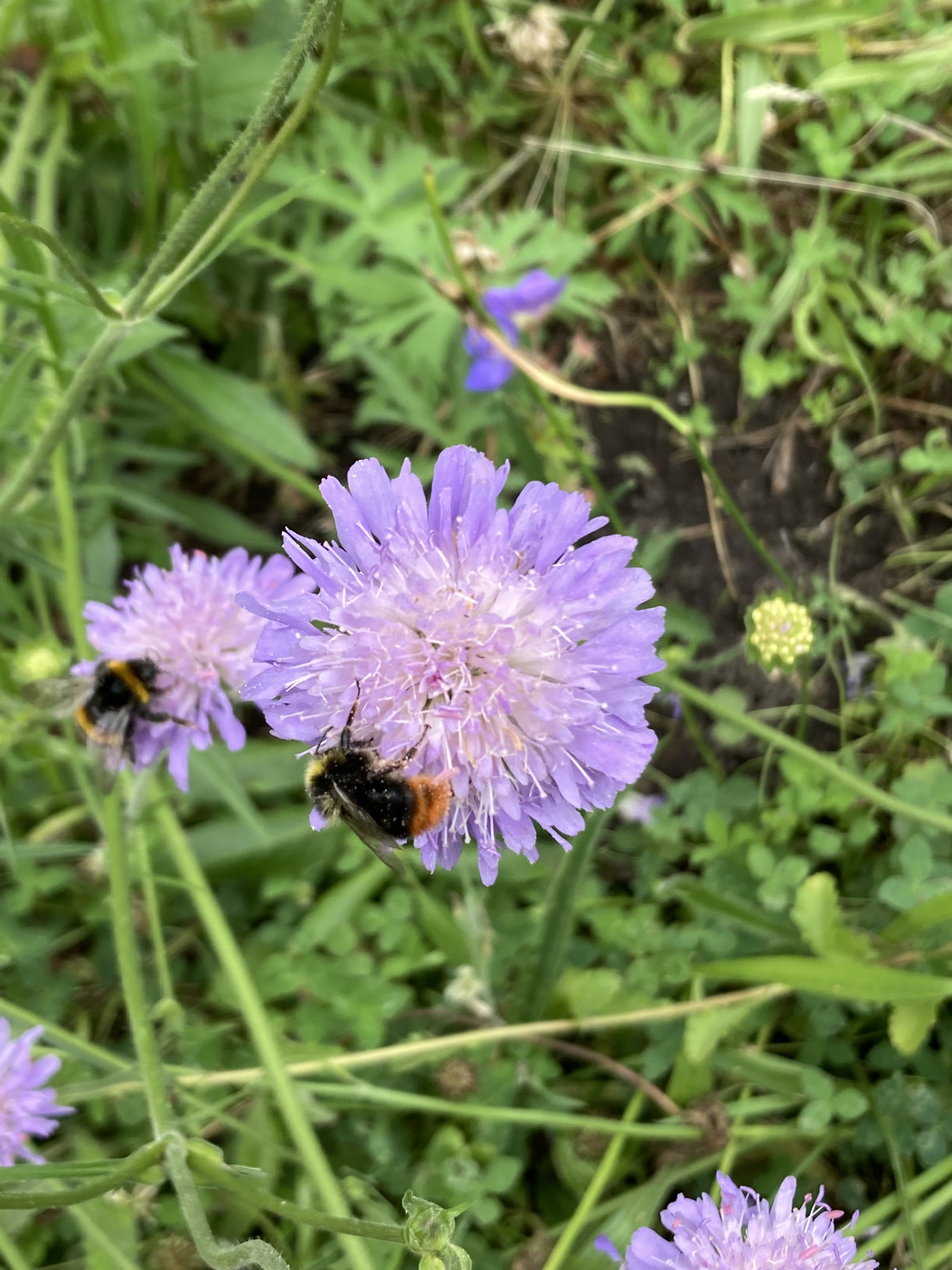Talk & Walk - Saturday 1st July
A hidden gem in the heart of Lancaster
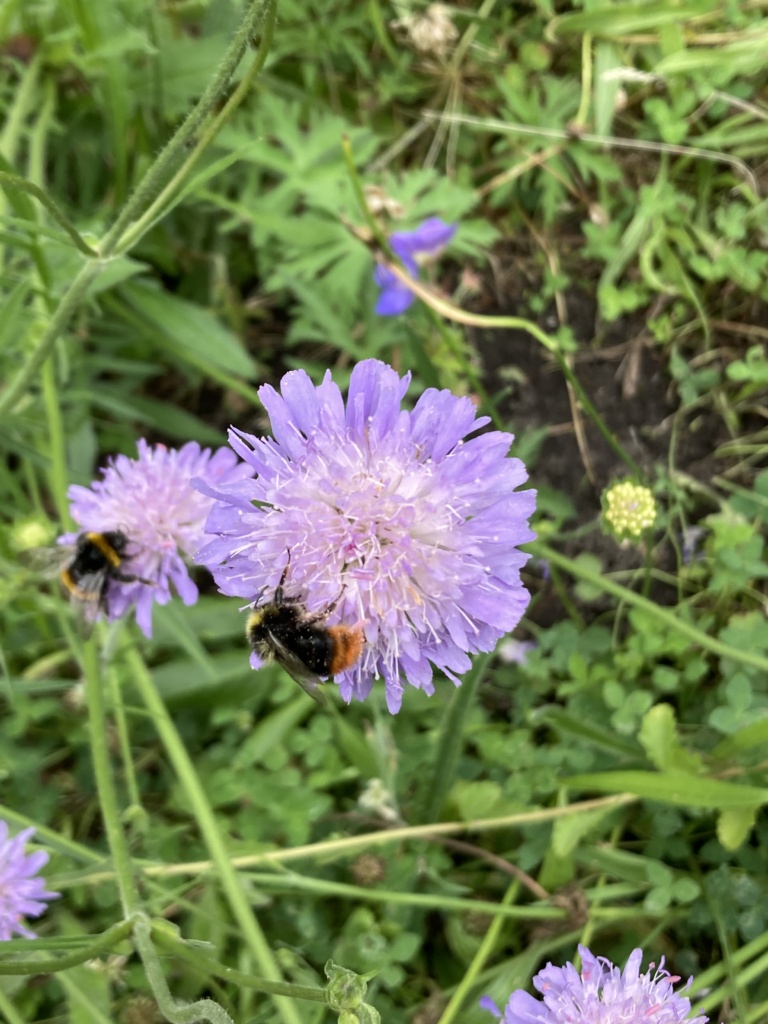
The Talk
The Talk portion of the day was delivered by Janet, a volunteer who has a wealth of knowledge about The Storey Institute and the Gardens.
Janet delivered a fascinating insight into the history of the site (the gardens only exist thanks to World War II evacuees being located in The Storey), and how the Tasting Garden came to be. I had no idea that it was a conceptual art installation!
The original sculptures from the installation are long gone (sadly, stolen for their scrap metal value), but The Friends of the Storey Garden have been raising funds to have them replaced. Two new sculptures of a plum and a pear have been created by local stonemason Alan Ward, who is based at Lancaster Castle.
If you ever get the opportunity to find out more about the gardens, I would encourage you to do so – there is far too much to include just here, but Janet delivered it in a witty and engaging manner.
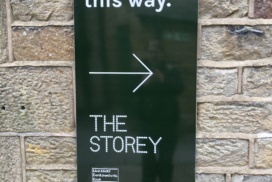
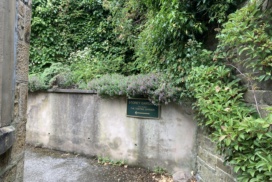
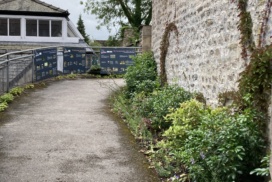
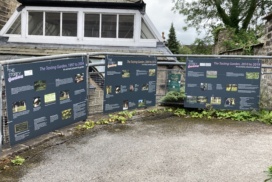
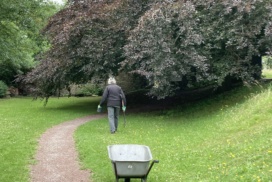
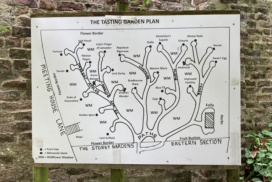
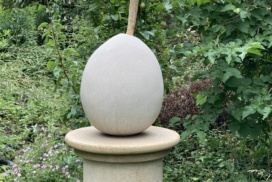
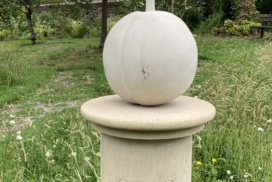
The Walk
- Volunteer Fiona (who can be found tending to the gardens most mornings of the week) gave us a wonderful guided tour of the gardens and, despite a pretty awful forecast, the weather was extremely kind to us!
It is clear that the gardens are loved and are cared for in a way that promotes wildlife as well as creating a relaxing space for people in the heart of the city. This is such a fantastic example of people and nature co-existing very happily! We were also provided with some interesting stories, particularly about the plant know as Giant Sea Holly but which is also given the name ‘Miss Wilmott’s Ghost’. The lady in question, a contemporary of Vita Sackville-West was not keen on overly neat, structured gardens, so would collect the seeds of this plant and scatter them liberally to break up the uniformity. Due to their grey-white colour, you can see how they got this nickname. One of the first guerrilla gardeners!
Fiona gave some top tips on gardening for wildlife:
- Have a mixture of plants that flower throughout the year to provide food sources for insects.
- Choose flowers which have flat heads (such as daisies, wild-type geraniums) and single (rather than double) flowers, or those which have many little flowers (florets) in a flowering head (inflorescence), such as buddleia.
From my own experience of gardening, I know that common herbs in the mint family (including rosemary, lavender, oregano, sage and other salvias) are also very popular with bees and hover flies when they flower.
We also discovered that ivy and holly are both necessary plants for the holly blue butterfly – the caterpillars feed on the young (tender) leaves of these plants.
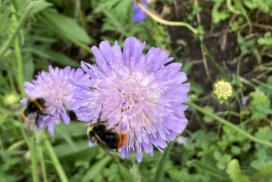
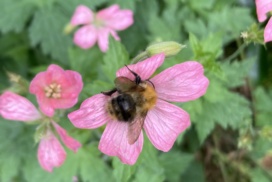
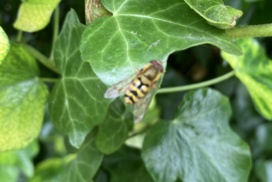
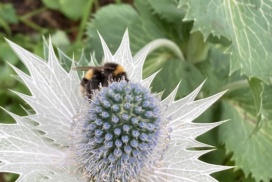
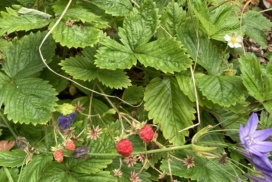
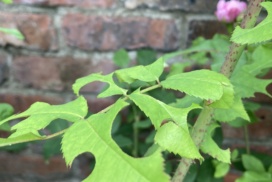
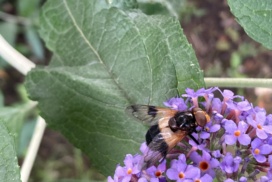
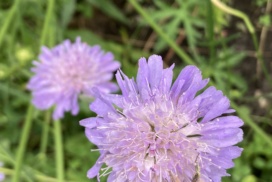
The Wildlife
As you can see from the images above, the wildlife clearly love what volunteers like Fiona are doing with the space. The species we saw (or saw signs of) included:
- Common carder bee
- Red-tailed bumblebee
- Buff- or white-tailed (or possibly both!) bumblebee
- Early bumblebee
- Leaf-cutter bee – evidenced by the semi-circular pieces missing from a rose
- Hover fly (probably Eupiodes corollae the Migrant Hoverfly)
- Pellucid fly (another species of hoverfly)
Poetry corner
In the garden, towards the back resides both a musk rose (there are stones in the border so you can carefully reach it to smell it) and sweet briar (also known as eglantine). Fiona reminded us of the following famous lines where they feature:
I know a bank where the wild thyme blows,
where oxlips and the nodding violet grows,
quite over-canopied with luscious woodbine,
with sweet musk-roses and with eglantine:
there sleeps Titania sometime of the night,
lull’d in these flowers with dances and delight.
A Midsummer Night’s Dream:
Act 2, Scene 1,
by William Shakespeare

